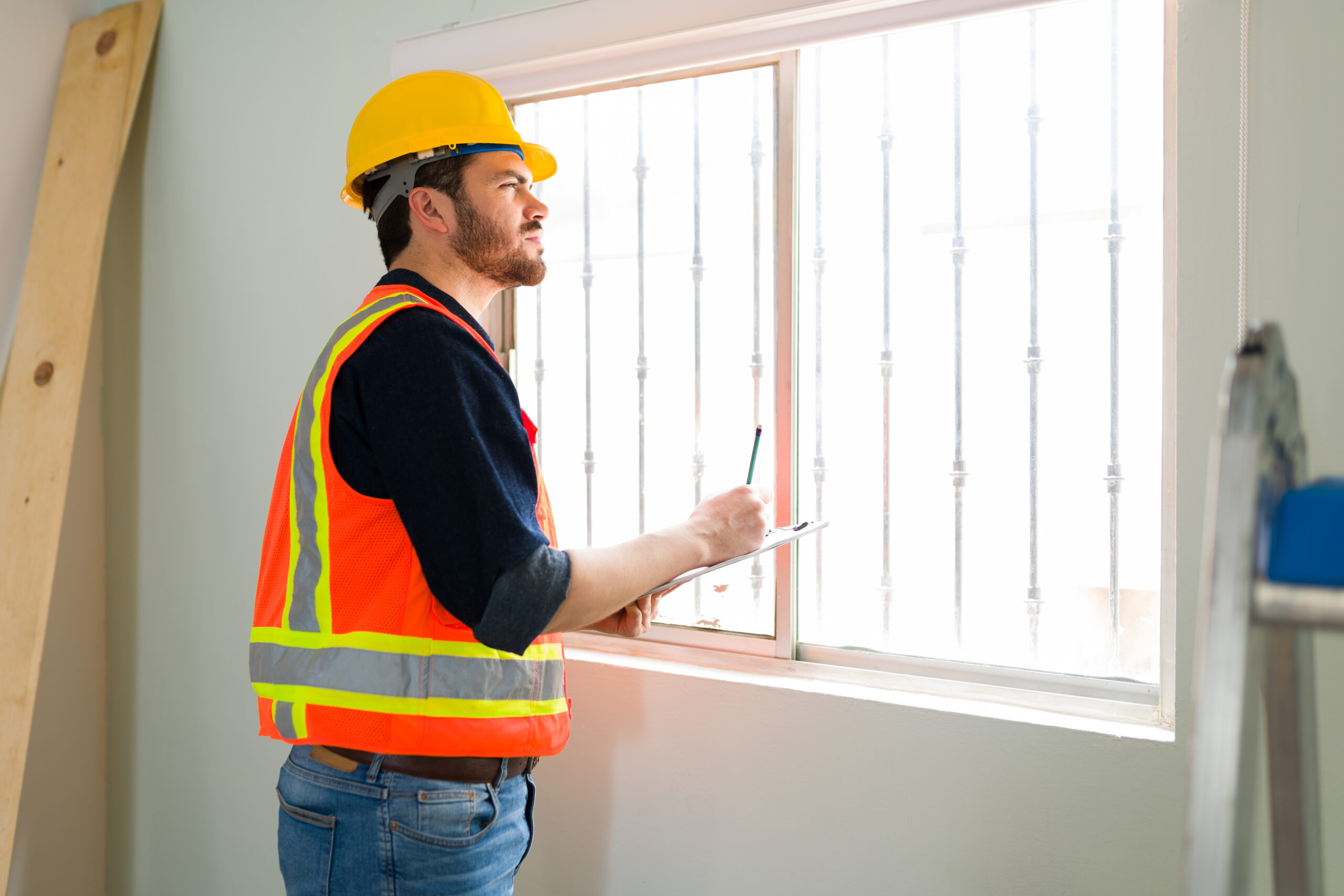Windows and doors play a crucial role in protecting your home from the elements, especially in Florida’s challenging climate. High humidity, heavy rains, and hurricane-force winds can all take a toll, leading to potential damage and water intrusion. Regularly inspecting your windows and doors can prevent costly repairs, enhance energy efficiency, and keep your home safe and comfortable. Here’s why and how you should inspect your windows and doors.
-
Inspect for Cracks and Broken Glass
Why it matters:
Cracks and broken glass in windows or doors compromise your home’s security and leave it vulnerable to water infiltration, wind, and debris during a storm. Even small cracks can weaken the structural integrity of the glass, making it more susceptible to further damage.
How to inspect:
– Examine all glass surfaces: Check for cracks, chips, or shattered areas on windows and doors.
– Pay close attention to corners and edges: These areas are more prone to developing hairline cracks over time.
– Check for loose or damaged panes: Ensure glass panes are firmly secured within the frame.
What to do if damage is found:
Replace cracked or broken glass promptly to prevent further issues and maintain your home’s safety and energy efficiency.
-
Check for Damaged Seals and Weatherstripping
Why it matters:
Damaged seals and weatherstripping can lead to drafts, increased energy costs, and water leaks. Properly sealed windows and doors are crucial for maintaining a comfortable indoor environment and protecting against the elements.
How to inspect:
– Look for visible gaps between the window or door frame and the wall.
– Test the seal by closing the window or door and feeling for drafts around the edges.
– Inspect weatherstripping for cracks, peeling, or signs of wear and tear.
What to do if damage is found:
Replace worn or damaged seals and weatherstripping to restore proper insulation and prevent water intrusion. This simple fix can significantly improve energy efficiency and reduce heating and cooling costs.
-
Examine the Frames for Cracks, Warping, or Rot
Why it matters:
The frames of windows and doors provide structural support and keep out moisture and drafts. Warping, cracks, or rot in the frames can lead to serious water damage and weaken your home’s protection during storms.
How to inspect:
– Look for visible cracks or gaps in the frame.
– Check for signs of rot or mold in wooden frames, especially in areas exposed to moisture.
– Test for warping by opening and closing the window or door. If it sticks, shifts, or does not close tightly, there may be structural issues.
What to do if damage is found:
Repair or replace damaged frames to maintain your home’s structural integrity and prevent further issues.
-
Look for Water Intrusion or Moisture Build-Up
Why it matters:
Water intrusion through windows and doors can lead to mold growth, structural damage, and costly repairs. Ensuring that all seals are intact helps prevent leaks and keeps moisture out.
How to inspect:
– Check for water stains, discoloration, or mold around the window or door frame.
– Feel for dampness or soft spots in the walls or flooring near windows and doors.
– Look for condensation between panes of double-glazed windows, which can indicate a broken seal.
What to do if water intrusion is detected:
Address the source of the leak immediately and consider resealing or replacing windows or doors if necessary. Mold remediation may be needed for extensive water damage.
-
Test the Functionality of Locks and Hardware
Why it matters:
Functional locks and hardware are essential for home security and energy efficiency. Damaged or corroded hardware can prevent windows and doors from closing securely, allowing air and water infiltration.
How to inspect:
– Test all locks and latches to ensure they open, close, and secure properly.
– Check for rust or corrosion on hinges, handles, and locks.
– Look for loose or damaged hardware that may need tightening or replacement.
What to do if issues are found:
Replace or repair faulty hardware to improve security and energy efficiency.
-
Inspect for Proper Operation and Alignment
Why it matters:
Windows and doors that don’t operate smoothly or are misaligned may not close properly, compromising your home’s insulation and security. Misalignment can also lead to premature wear on seals and hardware.
How to inspect:
– Open and close all windows and doors to check for smooth operation.
– Check for gaps when closed; there should be no light visible around the edges.
– Ensure proper alignment with the frame and track.
What to do if misalignment is detected:
Realign or adjust the window or door as needed. If the issue persists, contact a professional to assess for structural issues or necessary repairs.
-
Check for Signs of Pest Infestation
Why it matters:
Gaps, cracks, and damaged seals around windows and doors can serve as entry points for pests, such as insects or rodents. Preventing pest entry helps maintain a clean and healthy living environment.
How to inspect:
– Look for small holes or gaps around frames.
– Check for signs of gnawing or burrowing around window and door sills.
– Inspect for droppings or other signs of pests in areas prone to moisture.
What to do if pests are present:
Seal entry points and consider contacting a pest control professional for treatment and prevention.
Key Takeaway: Regular Inspection Protects Your Home
Checking your windows and doors regularly is crucial for maintaining your home’s energy efficiency, security, and structural integrity. Look for cracks, damaged seals, water intrusion, and other common issues to ensure your home remains protected from Florida’s unpredictable weather. By addressing problems early, you can prevent costly repairs and keep your home safe, comfortable, and efficient.
For professional assistance with window and door inspections or repairs, contact a trusted local contractor today. Stay proactive and keep your home in top condition!

